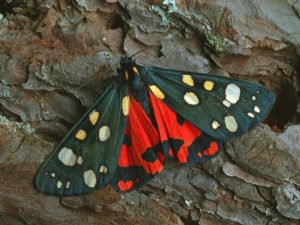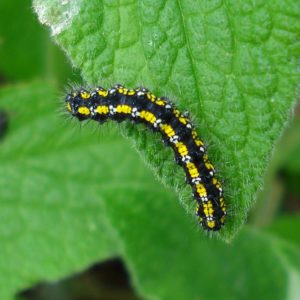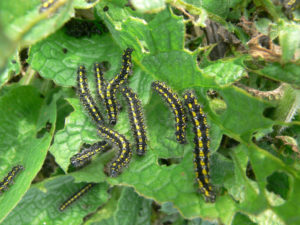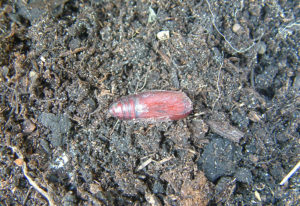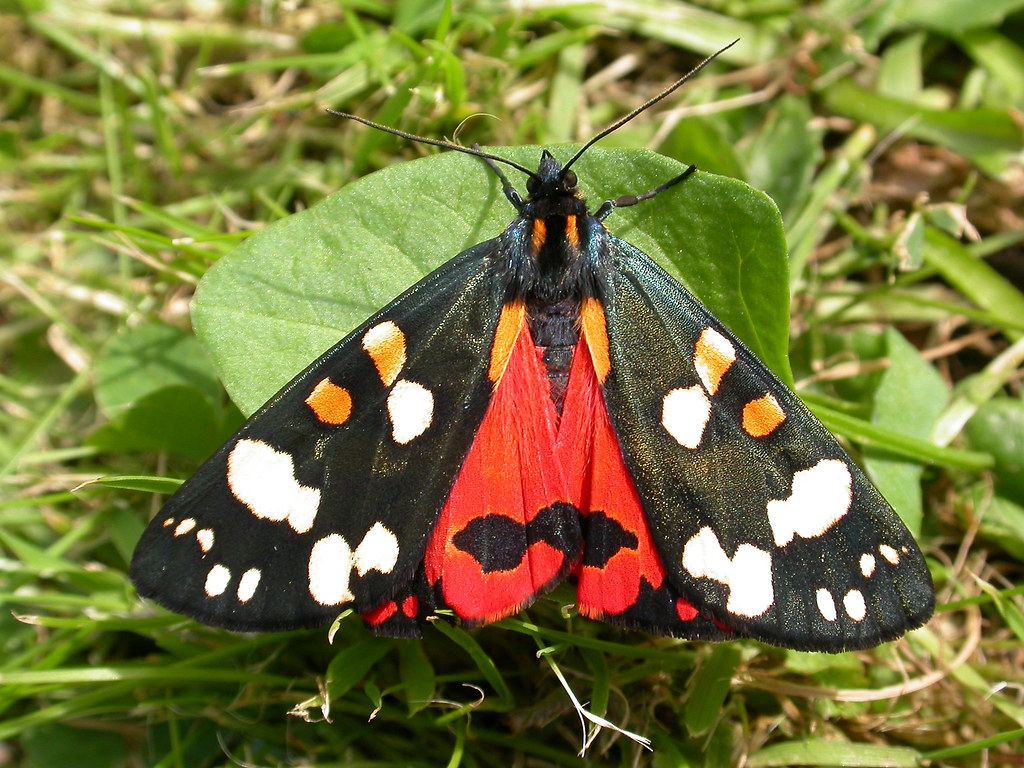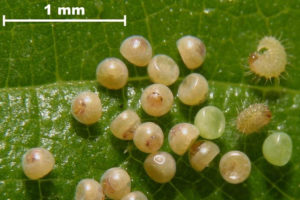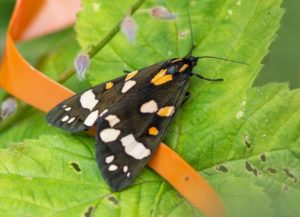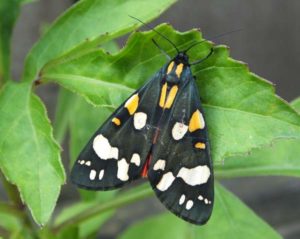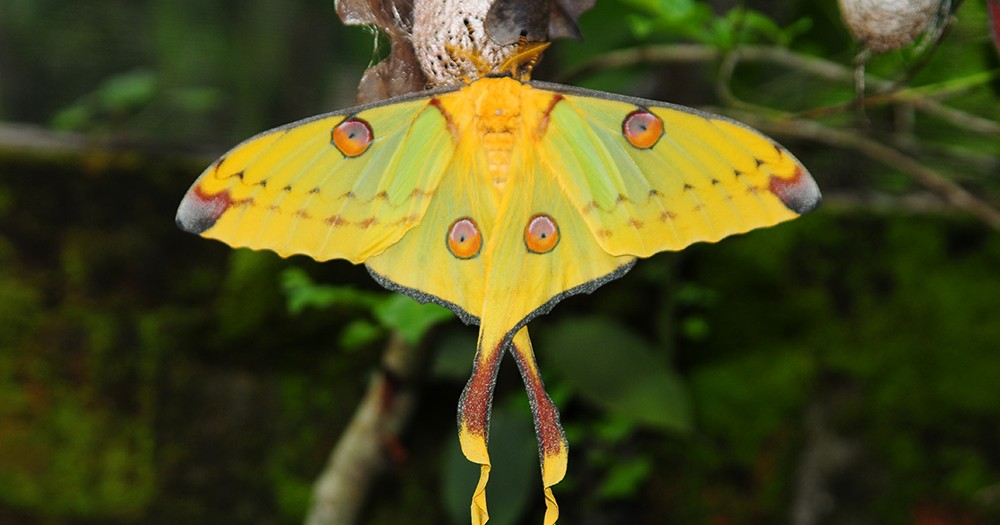Scarlet Tiger Moth (Callimorpha dominula)
The scarlet tiger moth of the Erebidae family is significant because of its immensely striking coloration. Swedish zoologist Carl Linnaeus first described this species in 1758 in the 10th edition of Systema Naturae.
Butterfly-conservation.org
Scientific Classification
- Family: Erebidae
- Genus: Callimorpha
- Scientific Name: Callimorpha dominula
Description and Identification
Adult Moth
Sexual Dimorphism: Present but not prominent.
Color and Appearance
They have a black thorax with a green gloss and two short yellow stripes running longitudinally. Their abdomens are black.
Forewing: When opened, the wings are black or dark, with the coloration brightening and attaining a metallic sheen when exposed to sunlight. The round or oval markings on the wings vary from yellow to white and sometimes even orange. When closed, the pattern remains similar, dark to black base, with yellow, or white spots.
Hindwing: When opened, they appear vibrant red with black spots arranged irregularly. When closed, the red of the underwings is faintly visible, while the black base and the yellow and white spots remain prominent.
Average wingspan: 45 – 55 mm
Flight pattern: Consistent
Season: Summer
Quick Facts
| Distribution | Europe, Near East (Turkey, northern Iran, and Transcaucasus) |
| Habitat | Wetlands, coastal habitats, gardens, and woodlands |
| Lifespan of Adults | Not recorded |
| Host Plants | Comfrey, nettles, strawberries, ash, geraniums, and buttercups |
| Adult Diet | Nectar (because of its developed mouthparts) |
Did You Know
- There have been sightings of this moth with variable color morphs, including one with yellow hindwings and another with black hindwings.
- The scarlet moth has several subspecies some of which include Callimorpha dominula dominula, Callimorpha dominula lusitanica, Callimorpha dominula profuga and Callimorpha dominula philippsi
Scientific Classification
- Family: Erebidae
- Genus: Callimorpha
- Scientific Name: Callimorpha dominula

